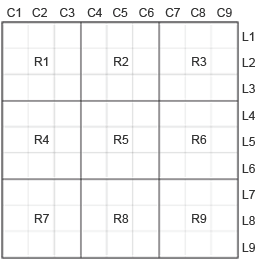Sudoku - Rules and history
Sudoku rules

The classic sudoku is a 9×9 square puzzle made of 9 lines (L1 to L9), 9 columns (C1 to C9) et nine "regions" (R1 to R9).
The puzzle contains digit from 1 to 9 and empty squares.
The aim of this game is to fill in empty squares using digits from 1 to 9 according to the following rules :
Each digit must be found once and only once per line, per column and per region.
Sudoku hystory
Sudoku (pronounced SOU DO KOU), more than a simple game of logic, it is a real phenomenon. simply
to note, in recent years, the extraordinary flowering of grids in the world press and on the internet.
Its secret lies in the simplicity of the rules dealing with the complexity of solving some grids.
But it also draws its strength from the story, it is based on the Latin square, a descendant of the magic square
older than 4000 years. The magic square, born in China, is transmitted across borders, enriched over
time and inspired painters, philosophers and mathematicians such as Leonhard Euler Switzerland.
Howard Garns, freelance writer, created the first grid in 1979 published by Dell Magazines. Recovery in Japan by Nikoli in the
name "or Suji wadokushin kagiru" abbreviation Sudoku means "the number must be unique." In November
2004 that the first grid is distributed in the newspaper "TheTimes" by Wayne Gould, a judge in New Zealand
retirement. Therefore, the game has a real excitement in England, the United States and Europe.
Today, old and young people meets Sudoku in logical thinking and subtle requiring no
knowledge of arithmetic, but can prove to be a complex game, see evil.
Advertising
